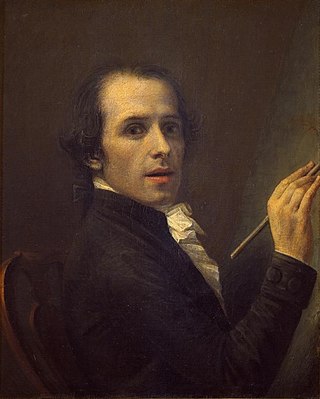
Antonio Canova was an Italian Neoclassical sculptor, famous for his marble sculptures. Often regarded as the greatest of the Neoclassical artists, his sculpture was inspired by the Baroque and the classical revival, and has been characterised as having avoided the melodramatics of the former, and the cold artificiality of the latter.

Thomas Ball was an American sculptor and musician. His work has had a marked influence on monumental art in the United States, especially in New England.
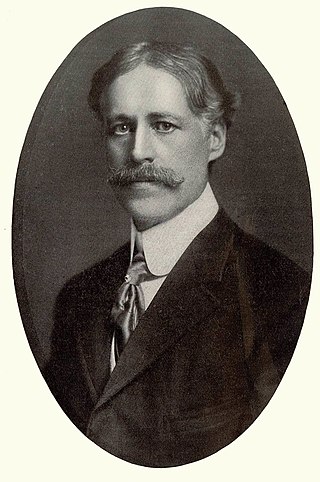
William Ordway Partridge was an American sculptor, teacher and author. Among his best-known works are the Shakespeare Monument in Chicago, the equestrian statue of General Grant in Brooklyn, the Pietà at St. Patrick's Cathedral in Manhattan, and the Pocahontas statue in Jamestown, Virginia.

Jean-Baptiste Lemoyne was a French sculptor of the 18th century who worked in both the rococo and neoclassical style. He made monumental statuary for the Gardens of Versailles but was best known for his expressive portrait busts.

William Rudolf O'Donovan was an American sculptor.

Charles Henry Niehaus was an American sculptor.
George Washington (1732–1799) was the first president of the United States.

Randolph Rogers was an American Neoclassical sculptor. An expatriate who lived most of his life in Italy, his works ranged from popular subjects to major commissions, including the Columbus Doors at the U.S. Capitol and American Civil War monuments.

Attilio Piccirilli was an American sculptor. Born in Massa, Italy, he was educated at the Accademia di San Luca of Rome.

Giuseppe Ceracchi, also known as Giuseppe Cirachi, was an Italian sculptor active in a Neoclassic style. He worked in Italy, England, and in the United States following the nation's emergence following the American Revolutionary War.

Brenda Putnam was an American sculptor, teacher and author.
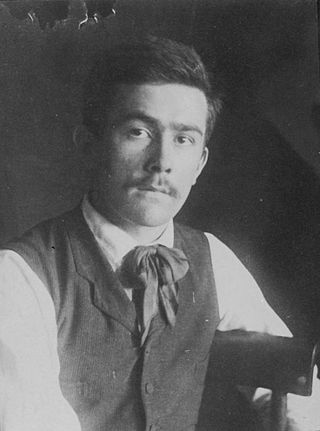
Samuel Aloysius Murray was an American sculptor, educator, and protégé of the painter Thomas Eakins.
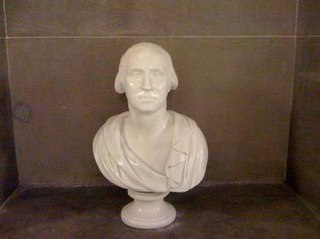
George Washington (bust by Houdon) is a public artwork that is a limited edition copy of an original work by French neoclassical sculptor Jean Antoine Houdon that is on display inside the Indiana Statehouse, which is located in Indianapolis, Indiana, United States. The artwork was cast a solid piece of plaster that has been painted white.

Abraham Lincoln is a public artwork by American sculptor and medallist Thomas Dow Jones, located in the Indiana Statehouse, Indianapolis, Indiana, United States. The painted plaster bust of Abraham Lincoln that resides in the Indiana Statehouse is a copy of an 1861 clay bust. Several versions of the bust exist in plaster, marble, and bronze mediums.
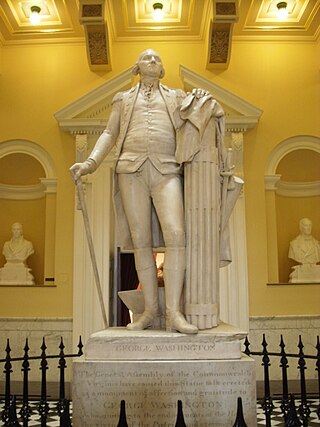
George Washington is a statue by the French sculptor Jean-Antoine Houdon from the late 18th century. Based on a life mask and other measurements of George Washington taken by Houdon, it is considered one of the most accurate depictions of the subject. The original sculpture is located in the rotunda of the Virginia State Capitol in Richmond, Virginia, and it has been copied extensively, with one copy standing in the United States Capitol Rotunda.

John Frazee was an American sculptor and architect. The Smithsonian has a collection of many of his sculptures as well as paintings of Frazee by other artists including Asher B. Durand and Henry Colton Shumway.

An outdoor granite sculpture of Alexander Hamilton by Carl Conrads is installed in Central Park, Manhattan, New York. Hamilton's son, John C. Hamilton, commissioned Conrads to sculpt this statue, which was dedicated on November 22, 1880, and donated to the city. Conrads used the bust of Hamilton created by the sculptor Giuseppe Ceracchi as a model for Hamilton's head.

Alexander Hamilton is a marble bust portrait of American Founding Father Alexander Hamilton, done in the style of a Roman Senator, by the Italian sculptor Giuseppe Ceracchi. Ceracchi also created many replicas, in both marble and plaster. The bust was later used as a model for several notable sculptures, paintings, and other works featuring Hamilton.

George Washington was a life-size marble statue of George Washington, done in the style of a Roman general, by the Venetian-Italian Neoclassical sculptor Antonio Canova. Commissioned by the State of North Carolina in 1815, it was completed in 1820 and installed in the rotunda of the North Carolina State House on December 24, 1821. The building and the statue were destroyed by fire on June 21, 1831. This work was the only one created by Canova for the United States.





















